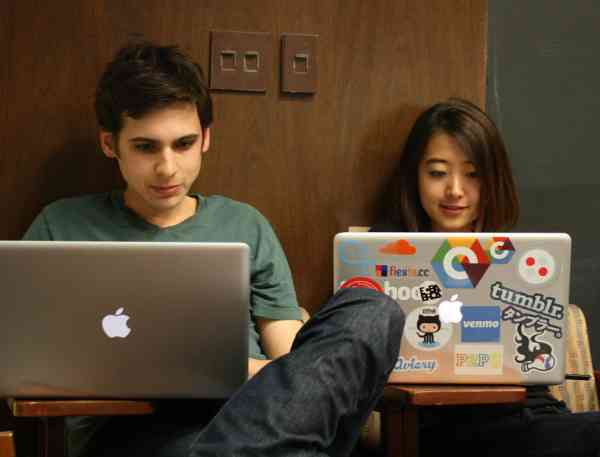
Evan Smith / University of Missouri-Columbia
“RSI” may need to be revisited. Not only are there governmental concerns, but should we be defining types of instruction according to financial aid definitions or use of technology? A brick-and-mortar school does not classify teaching by how many films are shown, who leads discussions, or how often an overhead projector is used. If we wanted to categorize the classroom that way, we would have to resort to course evaluations, teachers’ memoirs, and institutional memory to reveal interaction at its fullest. The main exception is the “lab course” with its hands-on processes and procedures.
In independent study (IS) programs, the student reads the materials and then takes action (does study questions and submits assignments), possibly sending in queries along the way. Students are not supposed to collaborate, whence the term independent study. This is true even when IS is put online; the course on the screen is largely student-driven, and progress is self-paced. Discussion boards generally do not work when students are enrolled at different times and pace themselves differently. Students in IS are rarely aware of who else is enrolled in their course.
However, synchronous distance learning, usually degree-oriented, and allowing cohorts, firm due dates, and discussion boards is different: the virtual classroom.
Offices can e-mail or otherwise communicate with students to remind them of their deadlines, whether it is matter of Assignment 2 being due (at some point) before the midterm, or Assignment 7 being due March 9 by midnight.
Another hurdle is students’ forgetting to review use of resources or the instructor’s non-reinforcement of that information. Chambers and Northedge (1997, p. viii) noted that students may be unaware of how computers can “support their studies”; this situation has improved, but students might skip over prefatory material unless the course is programmed to block continuing until that part is done.
Instructors, novices or veteran, give feedback, but each in his/her own way within the system. This could well change in future decades when enough digital natives have become teachers sympathetic to learners’ needs. Also, subject matter and levels of learning create different types of feedback, e.g., seeing why you did not solve a physics problem vs. receiving a thoughtful reply to an interpretation of characterization in literature. Those two responses—or the students’ required corrections—could easily take different amounts of time. In any case, instructor input is crucial.
If Competency Based Education (CBE) with its levels of mastery changes any of this, that will help immensely, the ideal situation being CBE-educated instructors teaching CBE courses so that all are on the same page.
In short, regular and substantive remains an elusive and a relative phrase. Once online is fully accepted into teaching, and differing types of interaction are apparent, we may have a better grasp of the situation.
REFERENCE
Chambers, E., & Northedge, A. (1997). The Arts Good Study Guide. London: The Open University.